The Phantom of the Opera PDF is a timeless gothic masterpiece by Gaston Leroux, exploring the haunting tale of the Opera Ghost in 19th-century Paris, now conveniently accessible in digital format with historical insights and bonus resources for enthusiasts․
Overview of the Novel
The Phantom of the Opera, written by Gaston Leroux, is a gothic novel set in the Paris Opera House․ It tells the tale of the enigmatic Opera Ghost, who haunts the opera, influencing singers like Christine Daaé․ The story intertwines horror, romance, and mystery, focusing on the Phantom’s obsession with Christine and her relationship with Raoul․ Based on real events, the novel explores themes of isolation, love, and the supernatural, captivating readers since its 1911 release․ Its eerie setting and tragic characters make it a timeless classic, now widely available in PDF format․
Availability of the PDF Version
Availability of the PDF Version
The Phantom of the Opera PDF is widely available for free download due to its public domain status․ Platforms like Project Gutenberg, Google Books, and various online archives offer the novel in digital format․ Readers can access the PDF version effortlessly, with options to download it directly or read it online․ The digital format ensures portability and readability across devices, making it a popular choice for fans of the classic tale․ Additional resources, such as study guides and adaptations, are often included or linked alongside the PDF for enhanced engagement․

Brief Summary of the Book
The Phantom of the Opera, written by Gaston Leroux, is a gothic novel centered around the enigmatic Opera Ghost, a musical genius haunting the Paris Opera House․ The story follows Christine Daaé, a young soprano, and her mysterious tutor, the Phantom, who becomes obsessed with her talent․ As Christine’s star rises, she reconnects with her childhood love, Raoul, the Viscount de Chagny, leading to a tragic confrontation․ The novel explores themes of love, obsession, and tragedy, set against the eerie backdrop of the opera house and its hidden secrets․
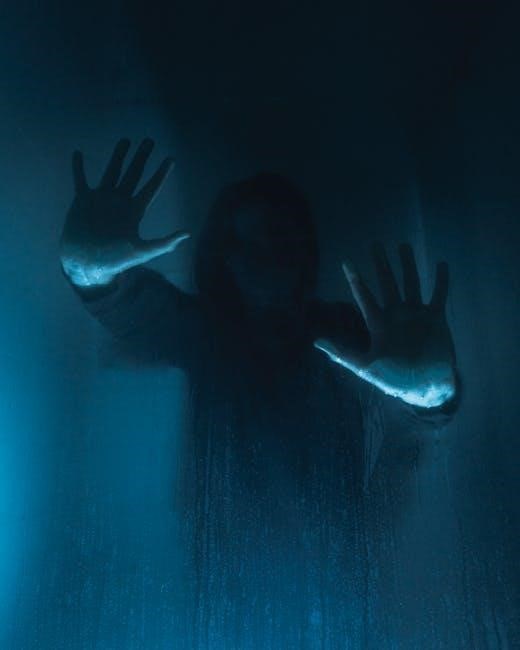
Plot Summary
The Phantom of the Opera unfolds in the Paris Opera House, where a mysterious figure, the Opera Ghost, haunts the premises, influencing the opera singers and creating fear and intrigue among the performers and staff․ The story centers on Christine Daaé, a young soprano whose talent captivates the Phantom, leading to a tragic love story intertwined with obsession, mystery, and the disappearance of key characters, ultimately revealing the dark secrets beneath the opera’s grandeur․
The Opera Ghost Legend
The Opera Ghost Legend centers on the mysterious figure haunting the Paris Opera House, believed to be a malevolent spirit exerting supernatural influence․ Rumors of his existence spread fear among performers and staff, with many claiming sightings of a shadowy form․ The ghost’s identity remains shrouded in mystery, fueling speculation and terror․ His presence is marked by unexplained occurrences, from eerie whispers to tragic events, solidifying his role as a central, enigmatic figure in the novel’s dark narrative․
Christine Daaé’s Rise to Fame
Christine Daaé’s rise to fame is a pivotal element of the story, as she captivates audiences with her extraordinary voice․ Discovered by the Phantom, her talent flourishes under his mysterious guidance, propelling her to stardom․ However, her success is overshadowed by the Phantom’s possessive obsession, creating a tragic interplay between her artistic triumph and personal turmoil, central to the novel’s exploration of love, ambition, and sacrifice․
The Disappearance of the Vicomte de Chagny
The disappearance of the Vicomte de Chagny adds a layer of mystery and tragedy to the narrative․ His sudden vanishing, alongside the death of his elder brother, Count Philippe, whose body is found near the underground lake of the Paris Opera House, shocks the characters and deepens the enigma surrounding the Phantom․ This event escalates tensions, revealing the Phantom’s dark influence and the tragic consequences of his obsession, while also highlighting Christine’s entanglement in the haunting secrets of the Opera House․
The Death of Count Philippe
The death of Count Philippe adds a tragic dimension to the narrative, as his body is discovered near the underground lake in the Paris Opera House․ This event is intertwined with the mysterious influence of the Phantom, deepening the enigma surrounding the Opera Ghost․ The Count’s demise shocks Christine and Raoul, intensifying their determination to uncover the truth behind the Phantom’s haunting presence․ This pivotal moment escalates the story’s tension, revealing the dark consequences of the Phantom’s obsession and the intertwined fates of the characters․
The Mystery of the Lake in the Cellars
The underground lake beneath the Paris Opera House is a central element of mystery, serving as the Phantom’s hidden lair․ Its dark waters and secretive nature create an eerie atmosphere, heightening the enigma surrounding the Opera Ghost․ The lake’s existence is tied to the tragic death of Count Philippe, whose body is discovered near its shores․ This subterranean location becomes a symbol of the Phantom’s power and isolation, fueling both fear and fascination among the characters and readers alike․
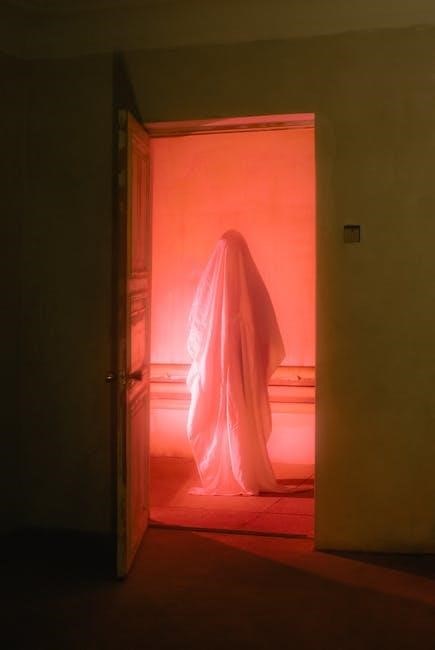
Main Characters
The Phantom, Christine Daaé, and Viscount Raoul de Chagny are central to the story, each embodying complex emotions and relationships that drive the tragic narrative forward․
The Phantom (Opera Ghost)
The Phantom, a mysterious and disfigured musical genius, haunts the Paris Opera House, exerting control over its performers․ His obsession with Christine Daaé drives the story, blending tragedy with brilliance․ The PDF reveals his dark past, showcasing his dual nature as both a feared figure and a misunderstood soul․ His talent and deformity create a haunting enigma, central to the novel’s gothic essence, making him one of literature’s most compelling characters, explored deeply in the digital version of Gaston Leroux’s classic․

Christine Daaé
Christine Daaé, a young and talented soprano, becomes the focal point of the Phantom’s obsession․ Discovered by the Phantom, she rises to fame under his guidance, showcasing extraordinary vocal abilities․ Her innocence and beauty captivate both the Phantom and Raoul, fueling a tragic love triangle․ The PDF version delves into her emotional journey, highlighting her growth from a naive singer to a woman torn between love and fear, making her one of the novel’s most poignant and relatable characters, central to the story’s emotional depth and gothic intrigue․
Viscount Raoul de Chagny
Viscount Raoul de Chagny, a noble and courageous young man, is Christine Daaé’s childhood friend and later her romantic interest․ Determined and loyal, Raoul investigates the mysterious events surrounding the Phantom and Christine’s disappearance․ His bravery leads him into the depths of the Opera House, where he confronts the Phantom in a desperate attempt to rescue Christine․ Raoul’s love for Christine drives the tragic events of the story, making him a central figure in the novel’s emotional conflict and the ultimate showdown with the Phantom․

Historical Context
Gaston Leroux’s novel, published in 1910, is set in late 19th-century Paris, drawing inspiration from the city’s rich cultural and architectural heritage․ Leroux’s journalistic background and meticulous research at the Paris Opera House lend authenticity to the story, blending historical facts with gothic elements to create a captivating narrative․
Setting in the Paris Opera House
The Paris Opera House, a grand and mysterious setting, serves as the central location for the novel․ Its opulent architecture and hidden passages create a eerie atmosphere, while the underground lake adds to the gothic ambiance․ Leroux’s meticulous research into the Opera House’s history and layout provides authenticity, immersing readers in the late 19th-century Parisian world where the Opera Ghost reigns, influencing singers like Christine Daaé and instilling fear in all who dwell within its walls․
Time Period (Late 19th Century)
The story unfolds in the late 19th century, specifically around 1880, in the grand Paris Opera House․ This era provides a rich backdrop for the gothic and mysterious atmosphere, with societal hierarchies and superstitions influencing the characters’ lives․ The late 19th century setting allows Leroux to weave historical accuracy with fictional elements, creating a believable world where the Opera Ghost’s existence seems plausible․ The time period also reflects the cultural and artistic vibrancy of Paris, enhancing the novel’s dramatic and tragic themes․
Historical Accuracy and Research
Gaston Leroux’s meticulous research into the Paris Opera House archives ensures historical authenticity․ The novel blends real events with fiction, creating a believable atmosphere․ Leroux’s attention to detail, such as the underground lake and the opera’s grandeur, reflects the actual architecture and culture of 19th-century Paris․ His research into the era’s societal norms and artistic movements adds depth, making the story immersive․ The PDF version includes historical notes, enhancing understanding of the novel’s context and Leroux’s investigative approach․

Literary Significance
The Phantom of the Opera PDF is a gothic masterpiece, blending tragic love and psychological complexity․ Its gothic elements and themes of obsession have shaped literature and culture, inspiring countless adaptations and solidifying its timeless appeal in the digital age․
Gothic Elements in the Novel
The Phantom of the Opera PDF is rich in gothic elements, featuring a mysterious setting in the Paris Opera House, eerie underground passages, and a haunting lake․ The enigmatic Phantom embodies classic gothic motifs, blending tragedy, obsession, and horror․ His masked identity and dark past evoke a sense of suspense, while the oppressive atmosphere and supernatural undertones create a chilling narrative․ These elements, combined with themes of isolation and madness, define the novel’s gothic essence, captivating readers and solidifying its place in literary history․
Themes of Love, Obsession, and Tragedy
The Phantom of the Opera PDF delves into profound themes of love, obsession, and tragedy, as seen through the Phantom’s unrequited passion for Christine Daaé․ His deep emotional connection, bordering on fixation, drives the narrative’s dark and poignant tone․ Christine’s torn affections between the Phantom and Raoul further intensify the tragic dynamics․ Leroux masterfully explores the destructive power of obsession and the enduring consequences of unrequited love, creating a tale that resonates with universal human emotions and the inevitability of heartbreak․
Cultural Impact and Legacy
Gaston Leroux’s The Phantom of the Opera has left an indelible mark on global culture, inspiring countless adaptations, including Andrew Lloyd Webber’s iconic musical․ The novel’s haunting tale of love, obsession, and tragedy has transcended literature, influencing film, theater, and music․ The Phantom’s enigmatic figure embodies both terror and sympathy, making him one of literature’s most enduring characters․ The story’s timeless appeal continues to captivate audiences, cementing its legacy as a cornerstone of gothic storytelling and a cultural phenomenon that resonates across generations․
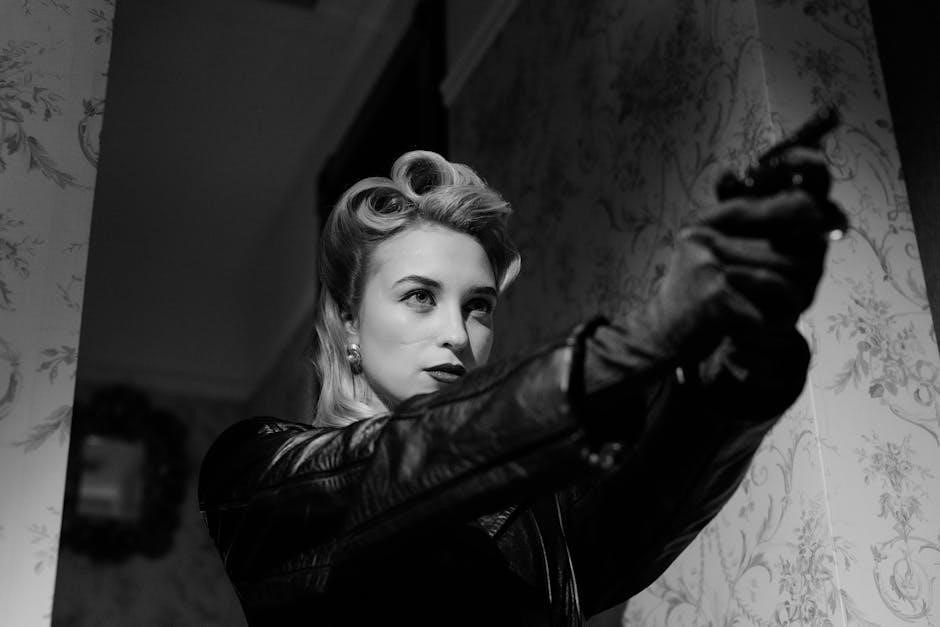
The Phantom of the Opera PDF offers a convenient way to experience Gaston Leroux’s classic tale․ Available from sources like Project Gutenberg, the digital format preserves the original story’s eerie charm and historical depth, making it accessible to modern readers worldwide․
Sources for Downloading the PDF
The Phantom of the Opera PDF is widely available for download from reputable sources such as Project Gutenberg, Google Books, and ManyBooks․ These platforms offer free access to the classic novel, ensuring its timeless story reaches modern readers․ Additionally, the Internet Archive provides a downloadable version, along with related materials like sheet music and historical documents․ These sources make it easy to explore Gaston Leroux’s masterpiece in a convenient digital format, perfect for both casual readers and scholars alike․
Features of the PDF Version
The Phantom of the Opera PDF offers a seamless reading experience with clear typography and adjustable font sizes․ The digital format includes original illustrations, preserving the novel’s classic charm․ Many versions are lightweight, ensuring easy storage on devices․ Some editions feature hyperlinked tables of contents for quick navigation․ Additionally, the PDF retains the original 1910 translation by Alexander Teixeira de Mattos, maintaining the story’s historical authenticity․ This format is ideal for both casual readers and scholars, providing a portable yet immersive way to enjoy Gaston Leroux’s timeless tale․
Popularity of the Digital Format
The Phantom of the Opera PDF has gained immense popularity due to its accessibility and convenience․ Readers can easily download and store the file, making it a preferred choice for modern audiences․ The digital format allows for adjustable font sizes and quick navigation, enhancing readability․ Its widespread availability on platforms like Project Gutenberg and other online archives has further boosted its appeal․ The PDF version is also lightweight, ensuring seamless storage on devices, making it a favorite among both casual readers and scholars alike․
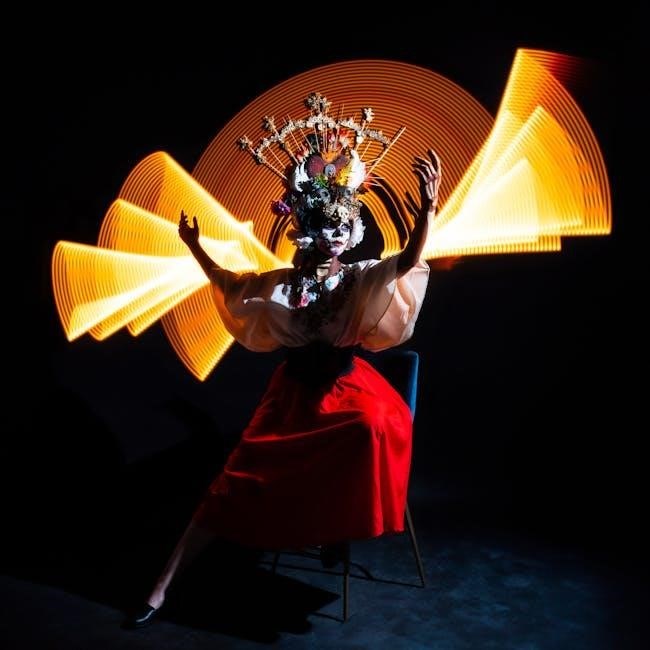
Related Files and Resources
Explore additional resources like sheet music, librettos, study guides, and adaptations, enhancing your understanding of the novel and its cultural impact through diverse formats and interpretations․
Sheet Music and Libretto
The Phantom of the Opera PDF includes sheet music and libretto, offering fans and musicians access to iconic compositions like Andrew Lloyd Webber’s adaptations․ These resources feature piano solos, orchestral arrangements, and even ukulele interpretations, allowing enthusiasts to engage deeply with the music․ Librettos provide detailed lyrics and narratives, enriching the storytelling experience․ Available in various formats, these files cater to both professionals and hobbyists, ensuring the musical legacy of the Phantom endures in diverse creative expressions and performances․
Study Guides and Educational Materials
Study guides and educational materials for The Phantom of the Opera PDF offer in-depth analyses, reading comprehension exercises, and essay prompts․ These resources cater to students and educators, providing insights into themes, characters, and historical context․ Available online, they include MYP-level materials and chapter-by-chapter breakdowns, helping readers engage with the novel academically․ These tools enhance understanding of the gothic elements, tragic themes, and cultural significance, making them invaluable for classroom use and independent study, while aligning with curriculum standards for literature and language arts․
Adaptations and Scripts
The Phantom of the Opera has inspired numerous adaptations, most notably Andrew Lloyd Webber’s iconic stage musical․ The 2004 film adaptation, directed by Joel Schumacher, brought the story to the big screen with grand visuals and music․ Scripts and librettos for both the musical and original novel are widely available in PDF format, allowing fans to explore the narrative in various forms․ These adaptations, including orchestral scores and stage scripts, provide a deeper understanding of the story’s evolution and its enduring appeal across different mediums and audiences worldwide․
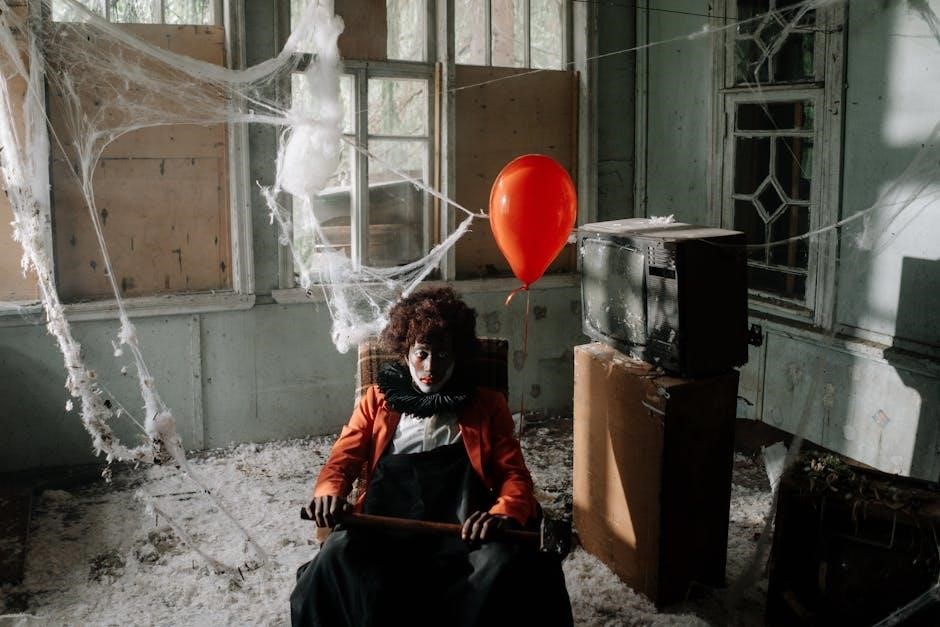
Adaptations and Interpretations
The Phantom of the Opera has been reimagined in various forms, including films, stage productions, and musicals․ These adaptations faithfully capture the essence of Leroux’s timeless tale․
Film Adaptations
The Phantom of the Opera has been adapted into numerous films, with the 2004 version starring Gerard Butler and Emmy Rossum being particularly notable․ Directed by Joel Schumacher, the film captures the grandeur and emotion of the novel, featuring stunning visuals and memorable performances․ While opinions on Gerard Butler’s singing vary, the film’s production quality and costumes are widely praised․ It remains a popular adaptation, offering a cinematic interpretation that complements the original novel and its PDF versions, allowing fans to experience the story in different formats․
Stage Musical by Andrew Lloyd Webber
Andrew Lloyd Webber’s The Phantom of the Opera is a world-renowned stage musical, premiered in 1986․ Featuring iconic music by Lloyd Webber, with lyrics by Charles Hart and Richard Stilgoe, it brings Gaston Leroux’s novel to life․ The musical captures the haunting tale of the Phantom, Christine, and Raoul, set against the grand backdrop of the Paris Opera House․ Its memorable songs, such as “The Music of the Night” and “All I Ask of You,” have made it a global phenomenon, blending romance, drama, and gothic elements in a spectacular theatrical experience․
Other Creative Interpretations
Beyond the novel and musical, The Phantom of the Opera has inspired numerous creative adaptations, including films like the 2004 version directed by Joel Schumacher․ Educational materials, such as Jennifer Bassett’s elementary-level PDF, introduce the story to younger audiences․ Additionally, interpretations like ukulele arrangements and various artistic reimaginings showcase its enduring influence, allowing the tale to resonate across diverse mediums and generations, further cementing its cultural legacy and universal appeal through innovative expressions․
The Phantom of the Opera remains a timeless masterpiece, blending gothic mystery with themes of love, obsession, and tragedy․ Its availability in PDF format has made it accessible to modern readers, ensuring its legacy endures․ Gaston Leroux’s original novel, alongside adaptations like Andrew Lloyd Webber’s musical, continues to captivate audiences globally․ The story’s haunting beauty and cultural significance solidify its place as a cornerstone of literary and artistic history, offering readers a profound and unforgettable experience․


